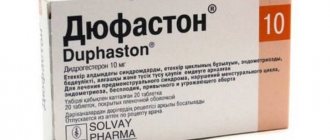Uterine fibroids are a very common gynecological disease. It is registered in more than 80% of women, but only a third of them are accompanied by noticeable symptoms. Most often, the disease begins after 40 years of age, but sometimes it happens earlier. In this case, this benign tumor becomes an obstacle to the normal course of pregnancy.
At the moment, the approach to the treatment of leiomyoma has been changed: doctors are making every effort to minimize trauma to the uterine tissue. To do this, they resort to removing fibroids by laparoscopy or using a hysteroscope-resectoscope. But the most promising method at the moment is embolization of the uterine arteries for uterine fibroids. The price of such an intervention is quite high due to the use of a large number of expensive consumables, but such an intervention is minimally invasive, does not require general anesthesia, and pregnancy and childbirth are possible after it.
Definition, diagnosis and prognosis for leiomyoma
What are uterine fibroids in women
We explain in accessible language what it is – uterine fibroids. This is a benign tumor-like formation that develops from the muscle fibers of the uterus. Myoma (it would be more correct to call it leiomyoma) is not a tumor, but rather a tumor-like formation, since it does not have a tendency to become malignant. A malignant tumor, leiomyosarcoma, if it occurs, it occurs regardless of whether there are myomatous nodes in the uterus or not. These nodes themselves do not turn into sarcoma.
What is fibroid in women? This is a dense knot, which is a cluster of muscle fibers, between the individual bundles of which connective tissue is laid. This “tangle” is formed from one normal muscle cell, which suddenly begins to rapidly divide. Over time, this division can either intensify or slow down and even stop.
Usually several such formations grow in the uterine wall, and because of them the uterus becomes larger in size. Under the influence of estrogen hormones, these nodes grow and can block the uterine cavity. Although they consist of muscle cells, they do not have the ability to contract and, moreover, interfere with the normal contraction of surrounding muscles (this is especially dangerous during childbirth and immediately after it).
Uterine fibroids code according to ICD 10 – D26. It stands for "other benign neoplasms of the uterus."
Types and danger of myomatous nodes
Nodes can be located in different parts of the uterine wall:
- under the endometrium - submucosal localization ;
- inside the muscular layer (myometrium) of the uterus - intramural uterine fibroids ;
- under the outer (serous) membrane of the uterus - subserous localization .
There are also nodes located among the ligaments of the uterus - intraligamentary formations. Cervical fibroids are extremely rare - a tumor growing from the muscular layer of the cervix into the cervical canal.
Types of nodes for uterine fibroids
The most dangerous myomatous nodes are submucosal ones. It is they, when growing, that cause an increase in the area of the endometrium and a violation of the contractility of the muscle layer. Larger area - a larger volume of tissue must be torn away during menstruation. Accordingly, each regular bleeding turns into a loss of a large amount of blood, which causes anemia and is fraught with the development of life-threatening hemorrhagic shock.
If the node under the endometrium continues to grow, then when it protrudes into the uterine cavity and touches the opening of the cervix, the uterus may begin to contract, pushing it into the cervical canal. This is the birth of a myomatous node , a complication of fibroids that requires prompt surgical intervention.
The second dangerous complication is necrosis (death) of the node . It develops when the fibroid stalk (the connection between healthy muscle and the fibroid node) becomes twisted. Then the vessels feeding the tumor are compressed.
What causes fibroids to develop?
The causes of uterine fibroids in women are still unknown. There are only 2 theories.
The first says that “wrong” muscle cells – what gives rise to uterine fibroids – appear in the wall of the uterus during fetal development.
The second says that cells - potential tumor precursors - appear during each menstrual cycle, but are mainly destroyed by the immune system. What causes fibroids then? It occurs when a certain hormonal background develops in the body: when, against the background of hyperestrogenemia, there is first an increase and then a decrease in the level of progesterone.
The increase in progesterone is associated with the luteal phase of the cycle, when the body prepares for pregnancy, and gives a signal for an increase in the number of muscle cells in the myometrium. A decrease in progesterone is the beginning of the menstrual phase. But not all “extra” cells die. Some of them remain and, under the influence of a large amount of estrogens, grow.
What is hyperestrogenemia associated with? What causes uterine fibroids? These are situations when:
- sexual activity started late;
- there were frequent inflammations of the reproductive organs;
- there was no childbirth or only one childbirth;
- there were many abortions or curettages;
- operations on the uterus were performed.
How does the disease manifest itself?
Symptoms of fibroids in women do not appear immediately, but when the tumor reaches a size of at least 2 cm. Signs of fibroids in women are symptoms of which direction (into the uterine cavity or out) the tumor is growing:
- With a subserous location and outward growth, the symptoms of uterine fibroids in the early stages will be a frequent urge to urinate and difficulty defecating.
- Intraligamentary tumor is manifested by pain in the lower abdomen and back, difficulty urinating, frequent pyelonephritis;
- Cervical fibroids are manifested by long and intense menstruation, as well as intermenstrual bleeding. As the formation grows, pain appears in the lower abdomen, radiating to the perineum and lower back;
- Subserous fibroids develop asymptomatically for a long time and can be found during routine ultrasound. When the tumor becomes large and causes disruption of the contractility of the muscular layer of the uterus, long and heavy menstruation appears, as a result of which chronic anemia develops. The very large size of the myomatous node causes pain in the lower back, the intensity of which increases during menstruation. Symptoms of pelvic organ compression may occur: increased urge to urinate and defecate.
- Submucous fibroids are manifested by cramping pain during menstruation, localized in the lower abdomen and radiating to the lower back. There are no symptoms of compression of the intestines or bladder with this localization of the formation.
Symptoms and signs of uterine fibroids during menopause for some time are masked as manifestations of the decline of a woman’s reproductive function. This:
- menstrual irregularities;
- decreased libido;
- lack of satisfaction with sexual intercourse;
- sudden bleeding from the uterus;
- feeling of pain or heaviness in the lower abdomen.
As the fibroids grow, the uterus will enlarge, and, accordingly, the abdomen. This is similar to pregnancy, which is why the size of fibroids is usually described as “12 weeks”, “20 weeks” and so on.
These are the symptoms and signs of uterine fibroids. Belly photo:
Uterine fibroids and pregnancy
Is it possible to get pregnant with uterine fibroids? Yes, if the tumor grows in such a way that it does not press on the fallopian tubes, then the egg has every chance of being fertilized. Uterine fibroids during pregnancy - is it dangerous? Yes, if the knot is large, it can complicate bearing a child:
- with cervical localization of the node, isthmic-cervical insufficiency develops;
- During early pregnancy, fibroids often cause miscarriage. This is due to malnutrition of the placenta and, accordingly, the fetus. Frequent contractions of the uterus can also provoke a miscarriage;
- a large node can cause intrauterine growth retardation of the fetus, which even ends in its antenatal death;
- Uterine fibroids during pregnancy in late stages of pregnancy can put pressure on the fetus , causing deformation of its body.
In most cases, myomatous nodes stop growing during pregnancy. They may increase slightly in the first trimester, but then they almost always begin to decrease. But sometimes it happens that fibroids suddenly begin to grow. Therefore, if you have this disease, you should not rely on chance and plan a pregnancy: you need to get treatment first.
Is it possible to give birth with uterine fibroids ? This is also a very dangerous situation, because this “ball” of muscles disrupts the normal contractility of the uterus. Because of this, it may develop:
- weakness of labor - primary or secondary;
- hypotonic, life-threatening bleeding. It is due to the fact that after childbirth the uterus cannot contract, its vessels gape and blood is released from them.
You cannot give birth with uterine fibroids if the tumor is located in the cervical canal area.
Is pregnancy possible with fibroids after 35 years? Yes, it is possible if the fallopian tubes are not compressed by the tumor and ovulation continues to occur. At this age, you also shouldn’t risk getting pregnant without treating your fibroid. It is better to then correct hormonal levels, or even go for IVF, but not risk your own health and the life of the child by entering into pregnancy with fibroids.
What is the prognosis for uterine fibroids?
The earlier treatment for fibroids is started, the more favorable the prognosis. After performing operations that preserve the uterus, for example, embolization of uterine fibroids (the price of the intervention depends on the clinic), you can even plan a pregnancy.
The exception is tumors with a tendency to grow rapidly. In this case, most doctors do not risk treating the tumor either conservatively or with organ-sparing surgery. This is explained as follows: with rapid growth, it is impossible to exclude that the woman has not a leiomyoma, but a leiomyosarcoma, which on ultrasound, MRI and CT will look almost the same. And if there is any suspicion of a malignant neoplasm, organ-preserving operations, even during the childbearing period, are not performed.
Can fibroids resolve on their own? Yes, this is possible with small tumors, if the correct hormonal levels are created. It can be achieved with the help of tablets (for example, Esmiya, Ginestril), but its normalization can also be observed after the end of the childbearing period. In most cases, if uterine fibroids decrease, it happens after menopause.
Diagnostics
Examination for uterine fibroids consists of the following studies:
- two-handed gynecological examination, when one hand is inserted into the vagina, and the other feels the uterus from the abdomen;
- Ultrasound, which allows you to see any form of uterine fibroids, as well as take a photo of it;
- hysteroscopy is a study that involves inserting a special device into the uterine cavity, which allows you to examine it from the inside. Hysteroscopy helps to identify myomatous nodes of cervical and submucosal localization.
POSTOPERATIVE PERIOD
Embolization of the uterine arteries does not require postoperative monitoring of the patient in a hospital setting. Most women go home the day of the procedure. Before this, the attending physician performs a number of prescriptions:
- A week's bed rest and mandatory monitoring of body temperature are recommended.
- Analgesics are prescribed to help eliminate postoperative pain.
- Sometimes anti-inflammatory drugs are prescribed to avoid unwanted consequences.
In some cases, the following postoperative manifestations are observed: bloody discharge from the vagina, nagging pain in the lower abdomen, disruption of the gastrointestinal tract, problems with urination. These symptoms go away very quickly and do not require special treatment.
There are mandatory instructions from a specialist, the implementation of which will allow the patient to successfully recover after UAE:
- for 90 days after the procedure, you must stop using sanitary tampons;
- drink more fluids for 7 days;
- for 14-16 days, give up physical activity, including sexual activity;
- do not take medications that thin the blood;
- Do not visit the pool, sauna, bathhouse, or take a bath for 2-3 days.
Leave a request +375 29 936-03-03
Treatment
How is uterine fibroid treated? Therapy for this tumor can meet one of two goals:
- Or reduce the size of myomatous nodes and prevent their further growth. This is conservative therapy. By assessing the size of the nodes using ultrasound and hysteroscopy after a course of conservative treatment, we can conclude whether uterine fibroids can be cured without surgery in a particular case. If the nodes have not decreased, there is no point in taking the second and subsequent courses of medications: you will have to resort to surgical treatment.
- Or remove myomatous nodes.
Conservative therapy
How to treat fibroids without surgery? For this use:
a) Antihormonal drugs. They are used in the treatment of nodes up to 4-5 cm in diameter. Such drugs include “ Esmiya ” and “ Ginestril ”, which cause mixed reviews for fibroids on thematic forums. Women note that with the drugs there is a short-term subjective improvement and even a decrease in the size of the myomatous nodes, after which they still have to resort to surgical treatment.
The action of these drugs is to block progesterone receptors, which are located only in the uterus. The result of treatment is the prevention of division of myometrial muscle cells and the destruction of “extra” myomatous muscle fibers. These medications for uterine fibroids also affect the endometrium, so menstruation stops while you take them. Menstruation resumes within 4 weeks after discontinuation of antiprogesterone medications. Women's reviews of the price of Esmiya for fibroids in 2021 are unanimous: the drug is very expensive: it costs from 8,300 to 8,500 rubles for 28 tablets. After using antihormonal drugs, maintenance hormonal therapy is needed, for example, installation of the Mirena hormonal system.
b) Combined oral contraceptives. They are different, contain different amounts of estrogens and gestagens, so they must be selected by a doctor based on the woman’s hormonal background.
c) Treatment of fibroids with folk remedies. Recipes that helped include a decoction of boron uterus, tincture of red brush, flaxseed oil, and a decoction of hemlock.
In addition, when the question is how to treat small uterine fibroids, a diet must be prescribed. Her goals:
- provide the body with the substances necessary for biochemical reactions - especially those resulting in the formation of female hormones - to follow the correct path (so that a normal amount of estrogens and gestagens is formed);
- prevent the entry into the body of substances that give rise to the formation of estrogens.
Some herbalists also recommend providing the body with phytoestrogens - substances of plant origin, which, in case of fibroids, will partially block receptors for estrogen, which is present in excess, and also block the aromatase enzyme. Such substances are contained in boron uterus, chamomile, milk thistle, and echinacea. In fact, treatment with phytoestrogenic drugs is dangerous: their effect on myomatous nodes cannot be predicted.
Diet and nutrition for uterine fibroids
The diet for uterine fibroids is as follows:
- excluding alcoholic beverages, especially wine and beer;
- replacing broiler meat, which contains not only growth hormones, but also other hormonally active substances, with domestic meat;
- limiting foods rich in simple carbohydrates (sweets, baked goods). These substances contribute to the formation of excess adipose tissue, which, especially in the abdominal area, is hormonally active;
- providing the body with vitamin E. It is found in vegetable oils (especially olive), wheat germ, lettuce, and milk;
- saturating the body with vitamin K, the deficiency of which increases bleeding. To do this, you need to include seafood, spinach, lentils, and green tea in your diet;
- consuming foods rich in vitamin C, which is necessary to strengthen blood vessels. It is found in rose hips, citrus fruits, apples, legumes, radishes;
- drinking no more than 2 liters of fluid per day - to prevent edema, including in the area of myomatous nodes.
Is it possible to take vitamins if you have fibroids? Doctors recommend paying special attention to ensure that the body receives a sufficient amount of:
- gland;
- magnesium;
- vitamin K;
- vitamin E;
- vitamin C;
- B vitamins;
- calcium;
- phosphorus.
If the diet of a woman with uterine fibroids contains these substances in a volume corresponding to the daily requirement, then taking synthetic vitamins does not make sense, and in the case of fat-soluble vitamins (K, E) it can even be dangerous.
Despite the fact that the above recommendations can be heard from gynecologists, and they are also in the public domain (that is, every woman can apply them), treatment of uterine fibroids without surgery has many negative reviews. On thematic forums you can often see that after undergoing a course of drug treatment and strictly following a diet, a woman does not get rid of this disease.
Surgical treatment
It is indicated in the following cases:
- the myomatous node compresses the bladder or intestines;
- the disease causes severe pain;
- uterine fibroids – in combination with adenomyosis;
- nodes grow quickly - more than 4 weeks of pregnancy (more than 20 mm) per year;
- More than 100 ml of blood is lost during menstruation.
Dimensions for surgery in millimeters for uterine fibroids – more than 60 mm.
These are planned surgical interventions that are carried out after certain preparation: reducing the size of fibroids with the help of antigestagenic drugs, correcting anemia, treating concomitant pathologies.
The operation can also be performed urgently: in case of necrosis or birth of a myomatous node.
The scope of surgical intervention is negotiated individually, depending on the size, location and number of myomatous nodes, the woman’s age, desire to become pregnant in the future, as well as existing contraindications.
The main methods of surgical treatment of uterine fibroids are of 2 types: removal of nodes only and removal of the uterus (hysterectomy).
Removal of only myomatous nodes
They are either removed during hysteroscopy - if the nodes are located submucosal or in the cervical area, and there are no subserous fibroids. It is also possible to remove leiomyoma nodes from laparoscopic access. In this case, several incisions are made in the anterior wall of the abdomen. A laparoscope is inserted into one of them: it will illuminate the organs inside and transmit the image to the monitor. Others are used for surgical instruments, with which surgeons, looking at the monitor, will isolate and remove myomatous nodes and ligate blood vessels.
Myomatous nodes can also be removed using laparoscopic (cavity) access. In this case, one large incision is made through which the node(s) are removed, after which all tissues are sutured in layers.
Reviews of abdominal surgery to remove uterine fibroids are very mixed. On the one hand, the woman feels much better: pain decreases, a large amount of blood stops being lost, so there are no symptoms of anemia; Intra-abdominal pressure decreases, and with it the load on the cardiovascular and respiratory systems. On the other hand, many note recurrence of leiomyoma in the future.
Uterus removal
Hysterectomy is resorted to mainly only in patients who have given birth. But this operation will have to be performed even if a nulliparous woman has:
- large tumor size - more than 16 weeks of pregnancy;
- fibroids grow faster than 4 weeks per year;
- the tumor began to grow after menopause (this indicates the likelihood of leiomyosarcoma);
- ineffectiveness of removal of individual myomatous nodes.
Hysterectomy can be performed not only through a large incision (laparotomy approach). In some cases, laparoscopy or vaginal access is also used. The latter methods are only possible for small tumor sizes. Vaginal access is used only for women who have given birth (in this case, the cervix is removed). Reviews about the consequences of hysterectomy for fibroids unanimously speak about the development:
- neuroses;
- depression;
- obesity;
- decreased libido;
- signs of skin aging;
- signs of osteoporosis.
However, in some cases, a hysterectomy is the only way to save your own health and life.
Cost of surgical interventions for fibroids
The price of surgery to remove uterine fibroids depends on the method of intervention. Here is the cost range in Moscow:
| Method | Price |
| Removal of myomatous nodes hysteroscopically | 15-120 thousand rubles |
| Removal of myomatous nodes laparoscopically | 125-250 thousand rubles |
| Removal of nodes using the cavity method | 25-250 thousand rubles |
| Hysterectomy | 50-150 thousand rubles |
Despite such a high cost, surgery does not exclude the possibility of fibroid recurrence. The risk is 2.5% per year, and it increases every year, meaning that after ten years, fibroids will grow back in every fourth woman.
How to get rid of fibroids and save the uterus - uterine artery embolization
Clinical guidelines for uterine fibroids indicate that there are alternatives to surgery to remove the uterus or fibroids. This is embolization of the uterine arteries, the cost in Moscow starts from 80 thousand rubles. What kind of operation is this?
Uterine artery embolization is a minimally invasive intervention that avoids:
- removal of tissue, that is, to preserve the uterus;
- injury to normal muscle tissue;
- affecting the ovaries, that is, the ability to ovulate is preserved, and the hormonal levels do not change;
- general anesthesia;
- long-term hospitalization;
- long-term pain syndrome.
Accordingly, this treatment allows a woman to freely plan a pregnancy and give birth, without fear that the injured uterus will not grow with the fetus, or will not allow the child to be born naturally.
The essence of the method is that synthetic microcapsules (microspheres) are introduced into the arteries - precisely those that feed the myomatous nodes. Their task is to block the vessel. Then the fibroid will not receive nutrition and will begin to gradually decrease in size.
The essence of the method: access to the femoral artery, selective catheterization and angiography of the right and left uterine arteries, superselective embolization of the latter with microparticles
Uterine artery embolization began to be used in patients who had contraindications to drug treatment, the operation itself, or endotracheal anesthesia. A little later, it began to be used to treat inoperable uterine tumors, in order to alleviate the condition of women.
Currently, uterine artery embolization is an excellent alternative to surgical treatment of uterine fibroids.
Indications for uterine artery embolization
This:
- planning pregnancy in the future;
- the size of the intramural myomatous node is no more than 12 weeks of pregnancy;
- contraindications to surgery or anesthesia;
- single node 4-6 cm in size;
- submucosal localization of the node when it is impossible to remove it hysteroscopically;
- combination of fibroids with adenomyosis or endometriosis;
- subserous nodes, the bed of which is located in the muscular layer of the uterus.
Preparation
To eliminate possible intra- and postoperative risks, uterine artery embolization is carried out after a thorough examination, which includes:
- smears from the vagina and cervix for cytological examination, that is, examination for cancer cells and signs of inflammation;
- general clinical blood and urine tests;
- biochemical blood tests;
- determination of antibodies to hepatitis, HIV, syphilis in the blood;
- transvaginal ultrasound with Doppler ultrasound;
- according to indications - diagnostic curettage to exclude endometrial cancer pathology;
- consultation with a therapist.
Before surgery you will not be able to eat or drink for 6 hours. When going to the operating room, you need to wear compression stockings .
How is EMA performed?
Treatment is carried out in an X-ray operating room equipped with modern foreign-made angiographic complexes. The patient lies down on the operating table.
Next, after treating the thigh with an antiseptic, an injection of local anesthetic is given over the femoral artery. After this, a puncture of the femoral artery is performed, and a Roberts catheter is inserted into this vessel through the puncture to inject X-ray contrast agents into it. They will make it possible to see all the uterine vessels and control which of them needs to be injected with microspheres. Next, specially designed microspheres are introduced through the catheter, often BioSphere Medical BeadBlock hydrospheres PVA particles with dimensions of 300-700 microns.
Selective angiography of the uterine arteries visualizes pathological vascular networks
Microspheres have the ability to shrink inside the catheter, and then, expanding in the vessels, reach the desired vessel and block it. They are coated with gelatin, which prevents them from sticking together. Their material itself is non-resorbable, that is, the microspheres will constantly be inside the desired artery and block blood flow in it.
The progress of the operation is monitored by an angiographic machine, that is, the X-ray contrast agent that is injected allows the surgeons to see everything they are doing on a monitor. After installation of the microspheres, control arteriography of the pelvis is performed.
The whole operation takes about half an hour to an hour.
Catheterization of the femoral artery using the Seldinger method and access to the uterine artery
Catheterization of the femoral artery using the Seldinger method and access to the uterine artery
Effects of the operation
Myoma will begin to shrink rapidly in the first six months after embolization, after which the rate of regression will be lower. Within a year, the uterus will return to its normal size, and the formation should decrease by 4 times. If the fibroid node is close to the uterine cavity, it may come out naturally.
After fibroid embolization surgery
The duration of hospital stay is 2-3 days. On the first day, severe pain will be noted (similar to the sensations during menstruation). It is eliminated by the introduction of intramuscular painkillers. In addition, the following will be noted:
- weakness;
- increased body temperature;
- increased fatigue.
Such symptoms should not be alarming; they are within normal limits. After a few days, bloody discharge similar to menstruation will appear from the vagina. This is also normal. After surgery, you will need to wear compression stockings for 5-7 days. Full recovery should take 2 weeks. To minimize the risks of complications, during this period the following restrictions must be observed:
- do not lift heavy objects;
- do not take thermal procedures;
- do not overcool;
- don't swim;
- do not ride a bicycle;
- exclude sexual intercourse.
Contraindications to UAE
This treatment is not carried out if:
- the size of the node exceeds 25 weeks of pregnancy;
- there is inflammation in the reproductive organs;
- atypical endometrial hyperplasia or endometrial adenocarcinoma was detected;
- the myomatous node grows very quickly, moreover, the heterogeneity of its structure was visible on ultrasound, and according to Doppler ultrasound, a high arterial blood flow velocity and a low resistance index;
- the node is separate, subserous (peritonitis may develop - inflammation of the peritoneum);
- have an allergy to iodine;
- pregnancy is diagnosed;
- The patient suffers from chronic renal failure.
FAQ
Is it true that embolization causes the ovaries to die ? No. The uterus and ovaries are fed by different arterial branches. Embolic microspheres are injected into the branch of the artery that feeds the myomatous node. This is controlled radiographically.
What is the effect of EMA? Reviews of uterine artery embolization for uterine fibroids indicate the high effectiveness of this treatment. Many women managed to get pregnant and give birth to a baby, and even after this, the growth of fibroids did not resume.
What are the risks of surgery? The risk of complications is about 1%. This:
- menstrual irregularities;
- inflammatory process in the uterus;
- bleeding from the vessel into which the microsphere was introduced;
- the appearance of new nodes - only with submucosal localization.
Thus, if you have all the symptoms and signs of fibroids, do not delay treatment! The sooner you seek professional help, the greater the chances of not only saving the uterus, but also getting pregnant!
CONDUCTING EMA
Embolization allows minimizing intervention in a woman’s body and avoiding hysterectomy (removal of the uterus).
This effect on fibroids is effective in more than 90 percent of cases. At the same time, the procedure allows the fairer sex to preserve its main function - childbearing. The operation is performed under local anesthesia. The femoral artery is punctured in the groin area. A thin tube, a catheter, is inserted into the resulting hole. All manipulations are carried out under radiographic control. To check the correct placement of the catheter, a contrast agent is placed into it and exposed to X-rays. Only after this the specialist injects a special drug into the vein, which contains special balls. They block blood flow in the vessels of the tumor. The tumor nodes are deprived of nutrition, which leads to their death. Connective tissue appears in place of the fibroid. In most cases, the neoplasm completely “resolves” or significantly decreases in size.
The fibroid removal procedure lasts about half an hour. Upon completion, a sterile bandage is applied to the catheter insertion site. It remains on the patient for 12 hours.
Leave a request +375 29 936-03-03









